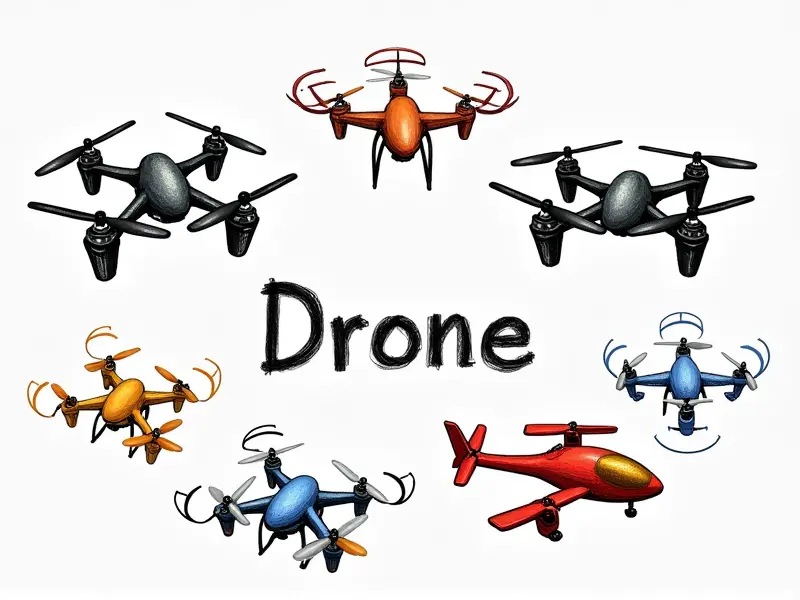How to fly a drone indoors

Master Indoor Drone Flying Techniques
Flying a drone indoors can be an exhilarating experience but it requires different skills and techniques compared to outdoor flying. This guide will help you navigate the unique challenges of indoor flight and provide essential tips for mastering your drone in tight spaces.
Beginner's Guide to Indoor Drones
If you're new to flying drones indoors, there are several key considerations:
- Choose the Right Drone: Opt for a small quadcopter with propeller guards and a camera that allows for easy indoor navigation.
- Understand Basic Controls: Learn to maneuver your drone using pitch, roll, yaw, and throttle controls efficiently.
- Familiarize Yourself with Indoor Spaces: Get accustomed to the layout of the room you plan to fly in, noting potential obstacles like furniture or walls.
Secrets of Smooth Indoor Drone Flight
To achieve smooth and controlled indoor flight:
- Practice Slow Movements: Start by flying your drone slowly to get a feel for its responsiveness in tight spaces.
- Use Propeller Guards: Protect both the drone and surroundings from accidental damage with propeller guards.
- Leverage Obstacle Avoidance Technology: Utilize modern drones equipped with sensors to detect obstacles automatically, enhancing safety.
Perfect Your Indoor Drone Skills
Improving your indoor drone flying skills involves consistent practice and learning from mistakes:
- Spend Time Practicing: Regularly fly indoors to build muscle memory for quick reflexes and better control.
- Learn from Experience: Analyze what went wrong during mishaps to improve your technique over time.
- Seek Feedback: Watch recordings of your flights or ask more experienced pilots for advice on areas needing improvement.
Navigate Tight Spaces with Drones
Flying drones in confined indoor environments requires careful navigation:
- Avoid Obstacles: Always keep an eye out for potential hazards like furniture, walls, and ceilings to maintain control.
- Use Markers: Place visual markers or tape on the floor to help you orient your drone in challenging spaces.
- Maintain Distance: Keep a safe distance from obstacles to prevent accidental crashes or damage.
Fly Safely Inside with RC Drones
Safety should always be the top priority when flying drones indoors:
- Inspect Your Drone: Before each flight, check for any loose parts or potential issues that could cause accidents.
- Fly Below Eye Level: This reduces the risk of injury to yourself and others if your drone were to crash unexpectedly.
- Avoid High Ceilings: Flying close to high ceilings increases the likelihood of losing control or damaging your drone.
Ace Indoor Drone Maneuvers Now
To become proficient in indoor drone maneuvers, focus on these techniques:
- 360° Rotations: Practice making smooth 360-degree rotations to enhance your control over the drone's orientation.
- Hovering Stabilization: Work on maintaining a steady hover in place without drifting or wobbling.
- Quick Turns and Stops: Train yourself to execute sharp turns and sudden stops accurately, which are crucial for navigating tight spaces.
Best Practices for Indoor Drone Use
To maximize your enjoyment and minimize risks when flying drones indoors:
- Select Appropriate Lighting: Good lighting helps improve visibility and reduces the chances of collisions or crashes.
- Monitor Battery Levels: Keep an eye on battery levels to avoid running out of power mid-flight.
- Clear Communication: If flying with others, ensure clear communication to coordinate movements and prevent accidents.
Insider Tips for Indoor Drone Pilots
Here are some insider tips from experienced indoor drone pilots:
- Wear Protective Eyewear: Glasses or goggles can protect your eyes in case of unexpected propeller contact.
- Use a Flight Simulator: Practice on flight simulators to gain confidence and refine skills without risking damage to your drone.
- Keep Firmware Updated: Ensure that your drone's firmware is up-to-date for the latest features and safety enhancements.
Fly Smoothly Inside with These Hacks
Implement these hacks to fly more smoothly indoors:
- Adjust Gyroscope Sensitivity: Tweaking your drone's gyro sensitivity can make it easier to control in tight spaces.
- Leverage Camera Feed: Use the live video feed from your drone’s camera for better situational awareness and smoother navigation.
- Practice with Lighter Loads: Start flying indoors without additional attachments or cargo to improve maneuverability.
Ultimate Indoor Drone Flying Tutorial
To become an expert in indoor drone flying, follow this ultimate tutorial:
- Start with Basic Flight Patterns: Begin by mastering simple flight paths like straight lines and circles before moving on to more complex maneuvers.
- Incorporate Obstacle Courses: Set up small obstacle courses using tape or toys to practice navigation skills in controlled environments.
- Video Record Your Flights: Watching recordings of your flights can provide valuable insights into areas needing improvement and help track progress over time.
Conclusion
Flying drones indoors offers a unique challenge that rewards patience, practice, and careful planning. By following the tips and techniques outlined in this guide, you'll be well on your way to becoming an expert indoor drone pilot. Remember always to prioritize safety, start with basic maneuvers, and gradually build up your skills through consistent practice.

